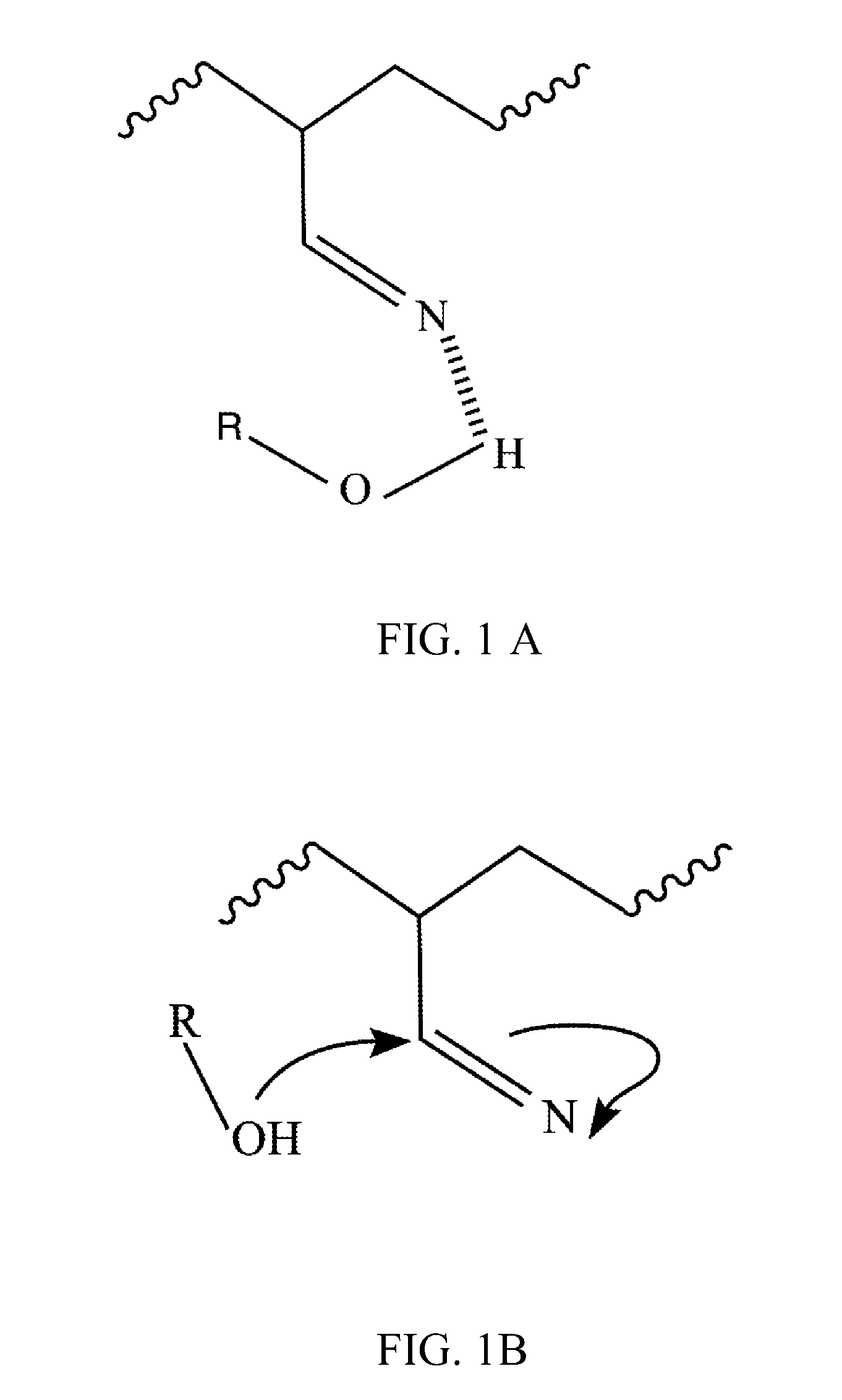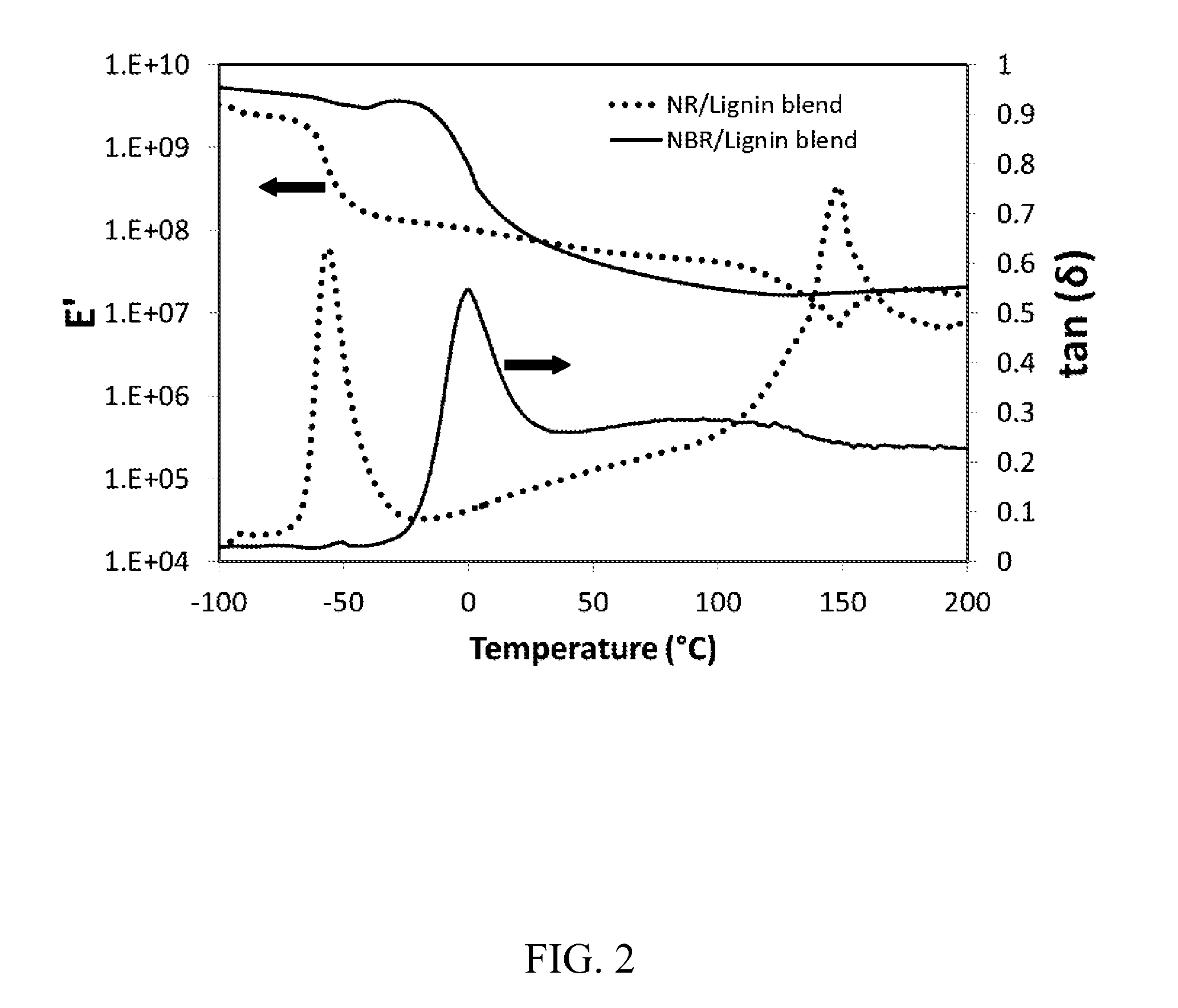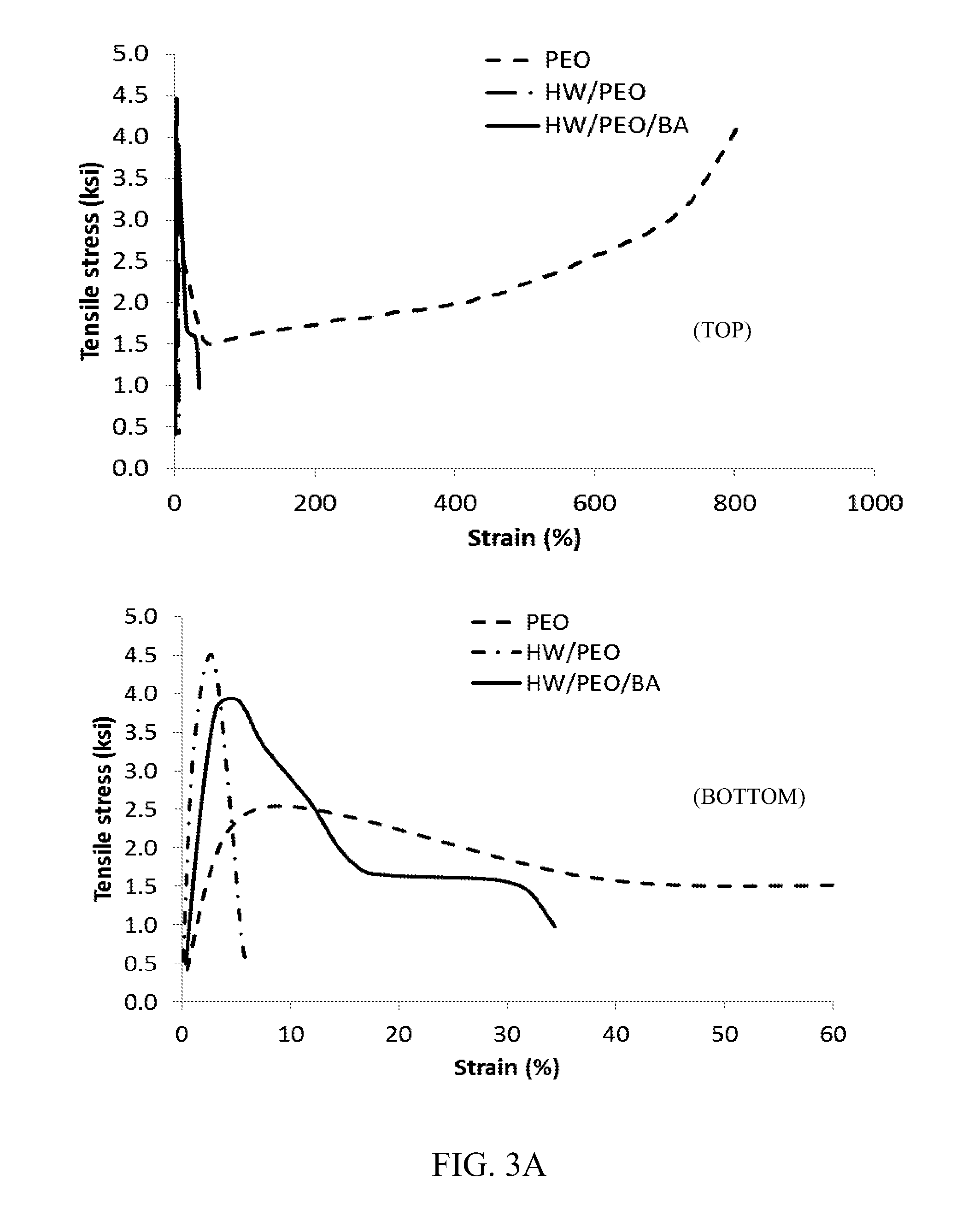Polymer blend compositions and methods of preparation
a technology applied in the field of polymer blend and composite composition, can solve the problems of high tensile strength but low toughness, and achieve the effects of high strength, elasticity, ductility, and sufficient degree of moldability
- Summary
- Abstract
- Description
- Claims
- Application Information
AI Technical Summary
Benefits of technology
Problems solved by technology
Method used
Image
Examples
example 1
Production of Polymer Blends with a Metal Oxide as Modifier
Comparative
Part 1: Reactive Synthesis of Materials in CW Brabender 3-Piece Mixer
[0049]Mixing run 1: The mix compositions are shown in the first column of Table 1. The mixer was preheated at a temperature set to 60° C. The rotor was set at a speed of 60 rpm, and the run time was set for 9 minutes. The mixing run began once the mixer reached the desired temperature, which first overshot and then cooled back down to 60° C. Then the nitrile rubber sample was added, and the rubber allowed to soften for two minutes, after which ZnO was immediately added. The mixture was blended for two minutes, followed by immediate addition of 1 pphr (parts per hundred parts of rubber) loading of DCP. The mixture was allowed to mix for five minutes. The sample was then recovered and stored at room temperature until the second mixing run.
[0050]Mixing run 2: The temperature was set to 140° C., speed set at 60 rpm, and run time set for 6 minutes. Th...
example 2
Production of Polymer Blends with Boric Acid as Modifier
Part 1: Reactive Synthesis of Materials in CW Brabender 3-Piece Mixer
[0054]The blend compositions are shown in the first column of Table 2. In this experiment, the earlier Mixing run 1 was avoided with a plan to double the DCP loading assuming 50% of the DCP will go to the lignin phase that will act as free radical scavenger and bond to the rubber by quenching reaction.
[0055]The mixer was preheated at a temperature set to 140° C. The rotor speed was set at 60 rpm. The mixing run began once the mixer reached the desired temperature, which first overshot then cooled back down to 140° C. Then the softwood Kraft lignin was added, and the lignin allowed to shear for two minutes, after which the raw nitrile rubber was gradually added. The mixture was blended for 6 minutes, after which 3 wt % of boric acid (with respect to total rubber+lignin mass) was added. Then the mixture was blended for 4 minutes, after which 2 phr of DCP was add...
example 3
Production of Polymer Blends with Boric Acid and Carbon Black as Modifier
Part 1: Reactive Synthesis of Materials in CW Brabender 3-Piece Mixer
[0059]The protocols of Examples 1 and 2 were followed. In this experiment, the DCP loading was further increased along with addition of 20 pphr carbon black. Also, in this set of experiments, the type of rubber material was altered to better understand the effect of the rubber type on the mechanical properties of the blend. Other than nitrile rubber or acrylonitrile-butadiene rubber (NBR), other rubbers, such as natural rubber (NR), styrene-butadiene rubber (SBR), butadiene rubber (BR), and brominated isobutylene paramethyl-styrene terpolymers (Exxpro™-3433) were used in different formulations.
[0060]Mixing run 1: The mixer was preheated at a temperature set to 140° C. The rotor speed was set at 30 rpm. The mixing run began once the mixer reached the desired temperature, which first overshot then cooled back down to 140° C. Then the rubber was ...
PUM
| Property | Measurement | Unit |
|---|---|---|
| wt % | aaaaa | aaaaa |
| temperature | aaaaa | aaaaa |
| temperature | aaaaa | aaaaa |
Abstract
Description
Claims
Application Information
 Login to View More
Login to View More - R&D
- Intellectual Property
- Life Sciences
- Materials
- Tech Scout
- Unparalleled Data Quality
- Higher Quality Content
- 60% Fewer Hallucinations
Browse by: Latest US Patents, China's latest patents, Technical Efficacy Thesaurus, Application Domain, Technology Topic, Popular Technical Reports.
© 2025 PatSnap. All rights reserved.Legal|Privacy policy|Modern Slavery Act Transparency Statement|Sitemap|About US| Contact US: help@patsnap.com



